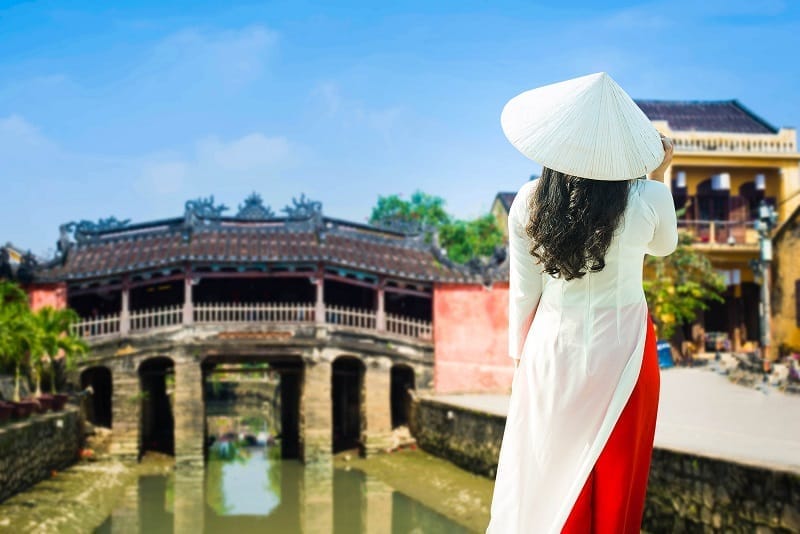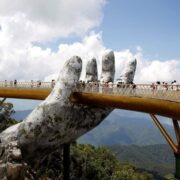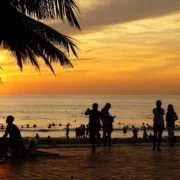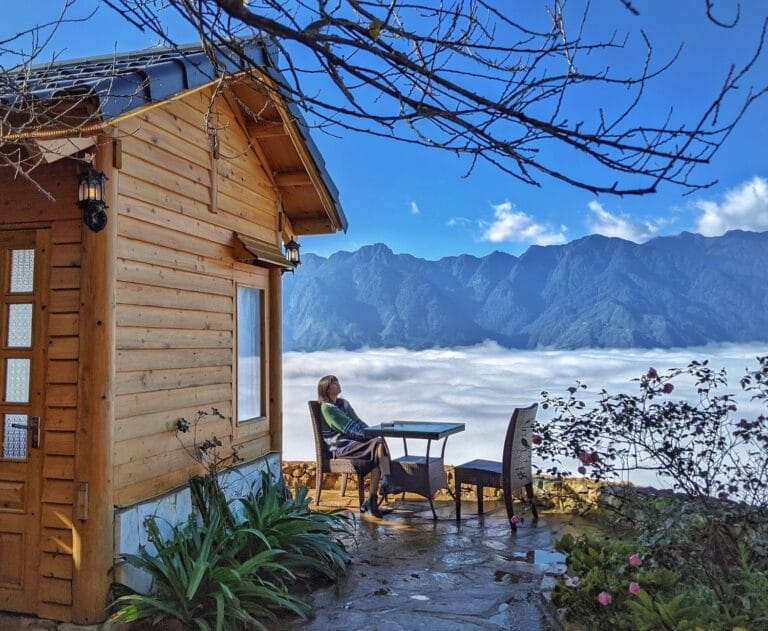
Where is Sapa in Vietnam?: A guide to the ideal cultural and sightseeing excursions
Where is Sapa in Vietnam? Located in the country’s hilly north, Sapa, Vietnam, is a hidden gem. With its tumbling rice terraces, foggy valleys, and towering peaks, Sapa is a stunning natural setting. Several ethnic minority groups with distinctive customs and traditions call it home, making it a focus of culture as well. Come visit this enchanted location with us as we uncover the travel marvels of Vietnam.
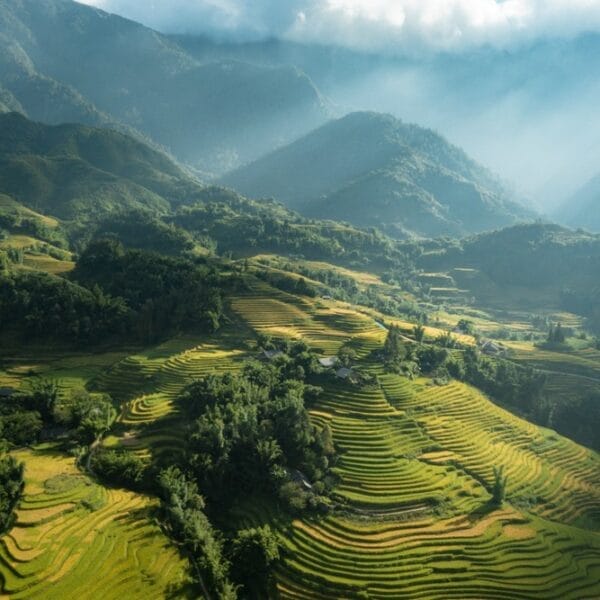
Sapa in Vietnam
Where is Sapa in Vietnam?
To answer the question, “Where is Sapa in Vietnam? ”Vietnam’s Sapa is located near the Chinese border in the northwest of the nation. The Hoang Lien Son mountain range, which includes Fansipan, the highest peak in Indochina, surrounds it.
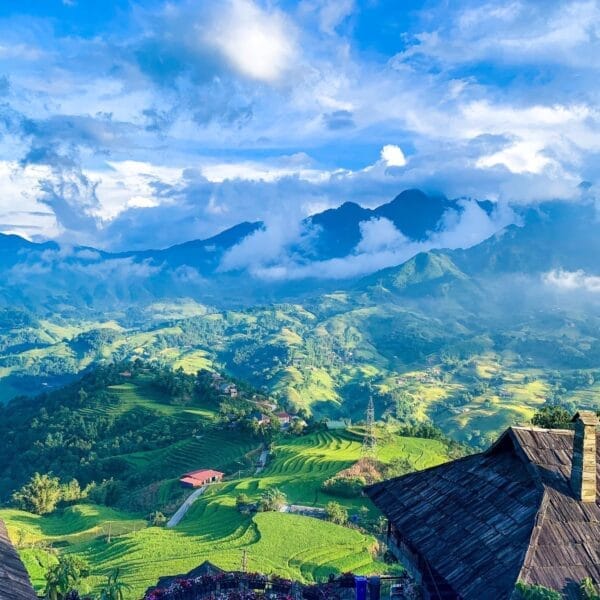
Sapa in Vietnam
With a land area of around 681 square kilometers, Sapa is primarily mountainous, with high peaks and deep valleys. The most recent figures indicate that around 61,498 people are living in Sapa. However, owing to regional economic development and migration, this number may change over time. Numerous ethnic minority groups, including the Hmong, Red Dao, Tay, and Giay, are found in Sapa. Every group adds to the rich cultural variety of the area with its unique customs and culture.
The four distinct seasons that define Sapa’s weather each have their own special appeal. Winter is dry and chilly with sporadic snowfall, while summer is warm and humid. The ideal seasons to visit Sapa are fall and spring when the town is blanketed in vibrant foliage and the weather is pleasant enough for hiking, trekking, and sightseeing.
The best time to visit Sapa
With a yearly average temperature of 1560 m above sea level, Sapa has a sub-temperate climate. The village experiences four different seasons, each with a 15.4°C average.
The best time of year to explore this mountainous center is in the spring, from March to May when the wildflowers are in full bloom. The hill tribes also exhibit their own culture in the spring via twelve festivals. You also have the unique opportunity to visit Sapa in April and experience all four of Vietnam’s seasons in a single day.
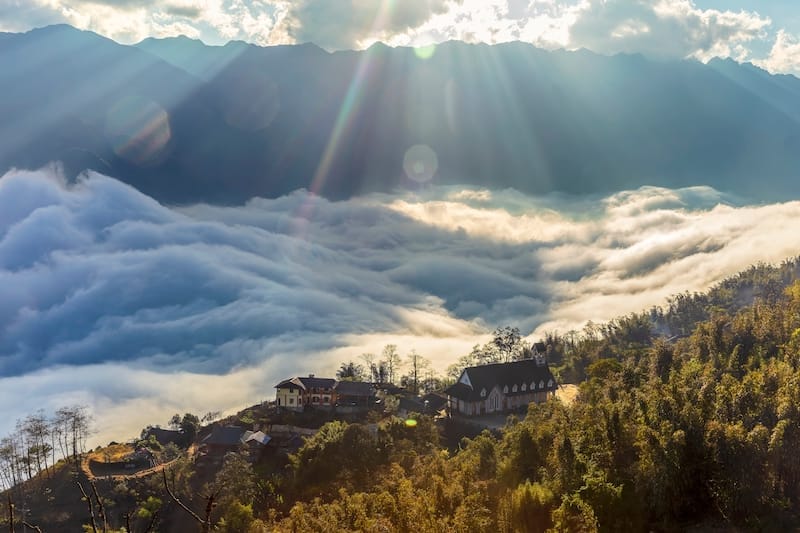
Sapa best time to visit
After the intense summer heat subsides, from September to November, Sapa becomes a tiny heaven for trailing and taking pictures. September is the ideal month to get stunning pictures of Sapa’s yellow rice terraces. Wintertime (December to February) in Sapa can occasionally produce dense, white snowfall, offering intrepid visitors a unique opportunity to view snow-capped mountains. It’s an experience of a lifetime in a nation with a tropical climate like Vietnam.
How to get to Sapa in Vietnam?
Sapa can only be reached by road or rail due to its remote position in the hilly Northwest region and the lack of an airport in the vicinity.
By train
Taking the train to Lao Cai and then catching an hour-long bus or taxi to the town is an excellent method to travel to Sapa from Hanoi. The trip, which lasts around eight hours, provides beautiful vistas of the surrounding mountain landscapes. Vietnam Railways has two express trains every day, leaving Gia Lam Station in Hanoi at 9:35 and 10:00 PM, that go from Hanoi to Lao Cai and back. Since the train only makes stops at significant stations, a seamless journey is anticipated.
By bus
It only takes five hours to go from Hanoi, the country’s capital, to Sapa via shuttle bus, thanks to the recently constructed Hanoi-Lao Cao highway. The cost of the ticket ranges from 220,000 VND to 450,000 VND, or around 10–20 USD. Travelers may save a ton of time by changing directly to the town because the travel is nonstop.
By motorbike/scooter
Riding a motorcycle or scooter is another method to travel to Sapa. It takes around ten hours to get there from Hanoi. The routes may provide breathtaking vistas because of the rough rocky terrain, but they are not the best choice for inexperienced riders. Remember that renting and operating a motorbike in Vietnam requires an international driver’s license. The weather may drop at night during your journey, so be sure to pack some warm clothes in your suitcase.
Read more: Things to do in Sapa: 15 activities that first-time visitors should not miss
Top Attractions
Fansipan Mountain
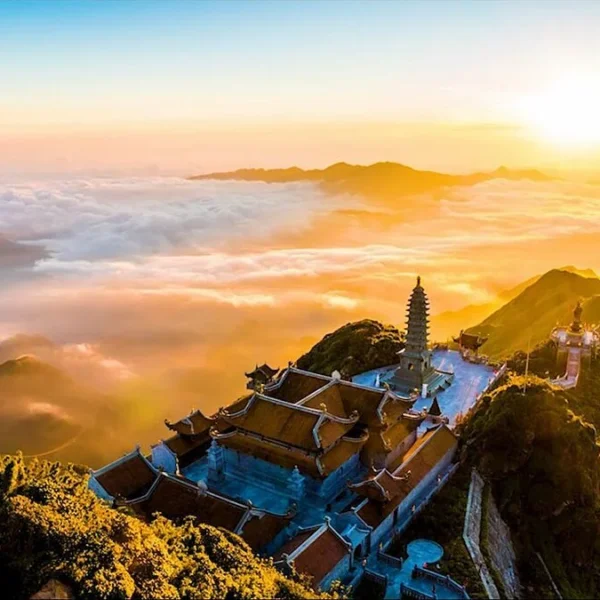
Fansipan Mountain
As one of the top vacation sites highlighted in the Sapa travel guide for daring visitors, Fansipan Mount is known as the “roof of Indochina Peninsula” in addition to being the highest mountain in all of Vietnam. The real trip presents both experienced and novice hikers with an amazing panoramic view of spectacular mountains, verdant valleys, and deep woods.
Ham Rong Mountain
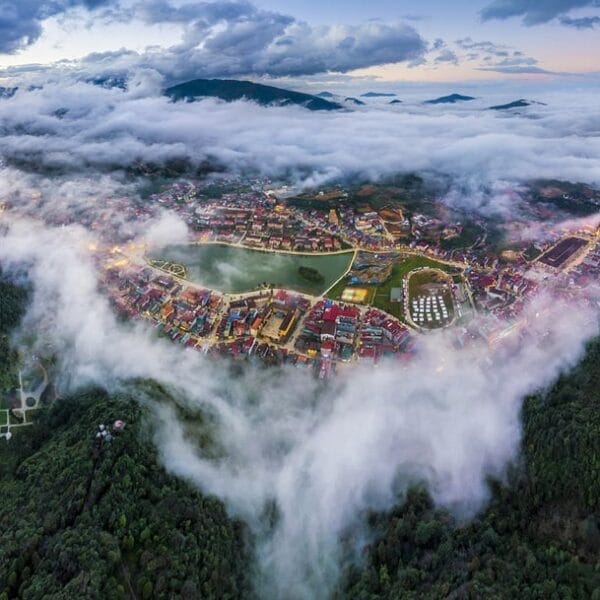
Ham Rong Mountain
Ham Rong Sapa Mountain is a must-see if you’re thinking of traveling to Sapa, Vietnam. The most popular tourist destination in Sapa is this magnificent summit.
Offering breathtaking sweeping views of Sapa and its environs, including verdant valleys and towering mountains that stretch to the horizon, is Ham Rong Mountain.
According to legend, a dragon that formerly resided in the area inspired the name of the mountain. The dragon was said to have been so big that it could wrap itself around the whole mountain. The granite formations that resemble a dragon’s head and tail are still visible today.
Sapa Stone Church
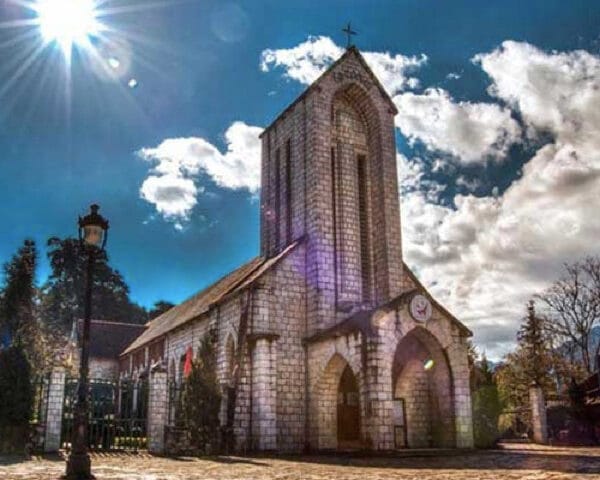
Sapa Stone Church
For those who are interested in architecture and history, the Sapa Stone Church is a must-see sight in Sapa, Vietnam. With its magnificent stone front and Gothic-style design, the church-erected by French missionaries in the 19th century-is a well-known landmark in the area.
The church’s interior is as stunning, including oak seats, elaborate stained-glass windows, and a lofty ceiling that exudes both majesty and peace.
Muong Hoa Valley
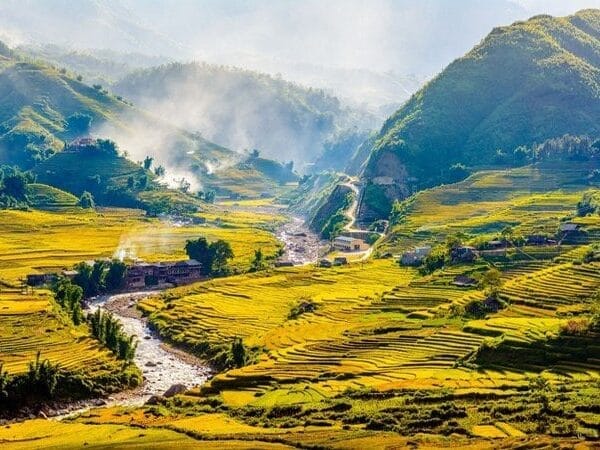
Muong Hoa Valley
Known for its romantic beauty, pristine nature, the cultural diversity of the local ethnic minority, and especially an ancient rock ground recognized as a unique heritage of the ancient Vietnamese with hundreds of carvings strewn on the meadows and the cascading terraced fields of the ethnic minority, the rustic and peaceful valley is nestled in a range of marvelous mountains.
Cat Cat Village Sapa
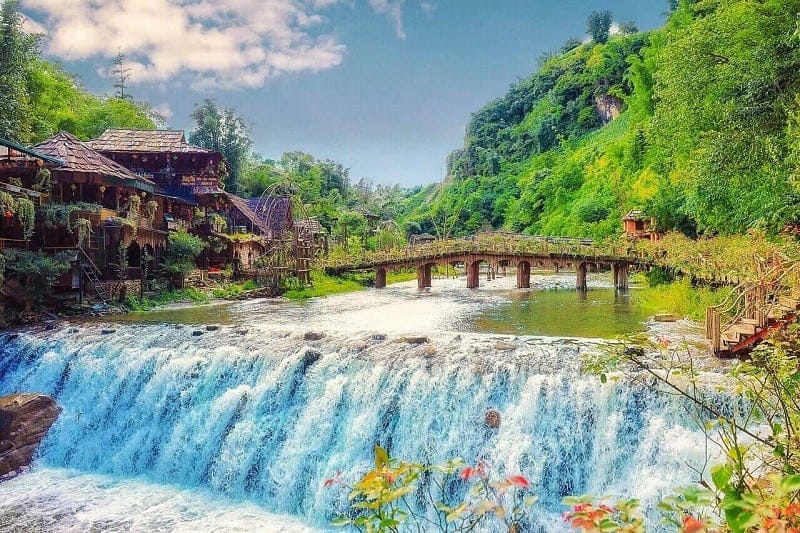
Cat Cat Village Sapa
The H’mong ethnic community, one of the biggest in Sapa, is concentrated in Cat Cat Village.
This community is renowned for its breathtakingly beautiful surroundings, which include grassy hillsides, lush rice terraces, and tumbling waterfalls. Discover how traditional H’mong clothing and crafts are made, stroll through the village’s winding lanes, and visit traditional H’mong residences.
Bac Ha Market
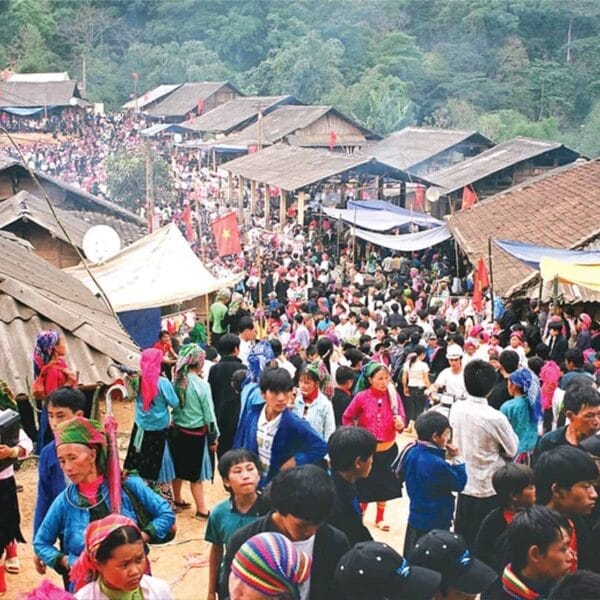
Bac Ha Market
Bac Ha, the largest ethnic market in the North-Western area of Vietnam, is located around 100 kilometers from Sapa. This is an excellent site for indigenous people to congregate and show off their traditional and colorful ethnic clothes, drawing hundreds of people from the surrounding hill tribes. It also provides guests with a perfect opportunity to learn about Sapa’s rich cultural variety.
Sapa Love Market
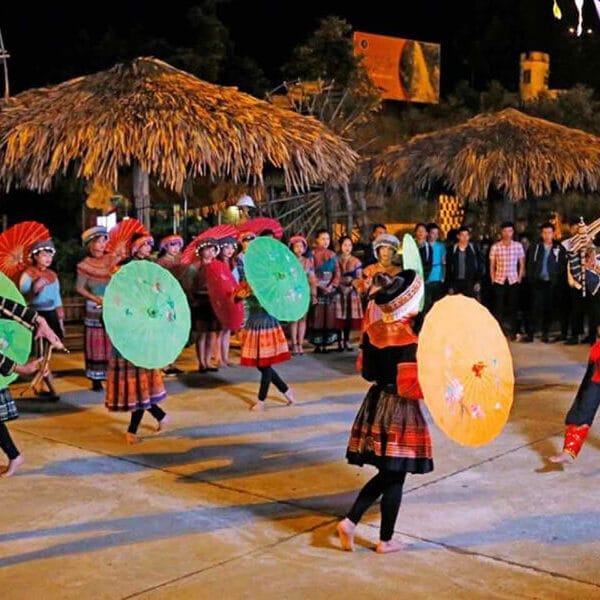
Sapa Love Market
No traveler to Sapa should miss the Sapa Love Market – a unique experience and a beautiful piece of cultural heritage. Every Saturday night, the town comes alive with the captivating dances of the females wearing vibrant costumes and the endearing hearts of the native boys. Not only a well-known location where young people from many ethnic backgrounds go to search for mates for marriage.
The Heaven Gate
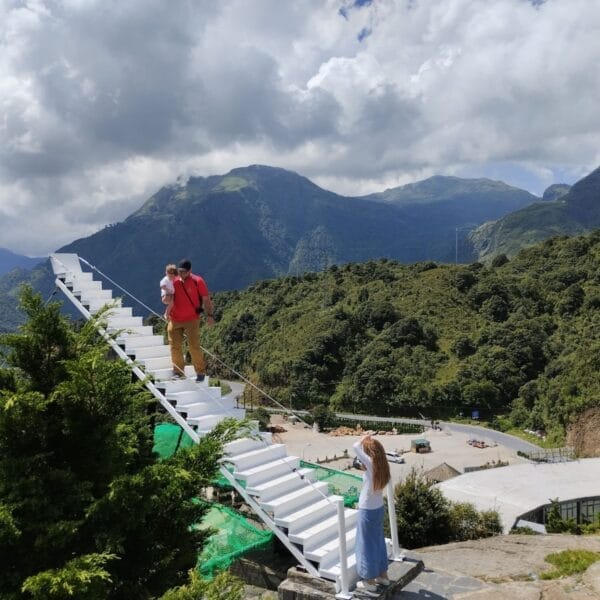
Heaven Gate
The Heaven Gate is located above Tram Ton Pass, which is part of the Hoang Lien Son mountain range. It is located around 18 kilometers north of Sapa and offers stunning views of the valleys between Fansipan, the Indochina Peninsula’s top. As its name suggests, this location offers a glimpse of paradise with its breathtaking landscape of towering mountains and deep chasms. For visitors to Sapa, entering Heaven Gate and taking in the breathtaking view of the meandering pass roads below will remain a memorable experience.
What to eat on your trip to Sapa?
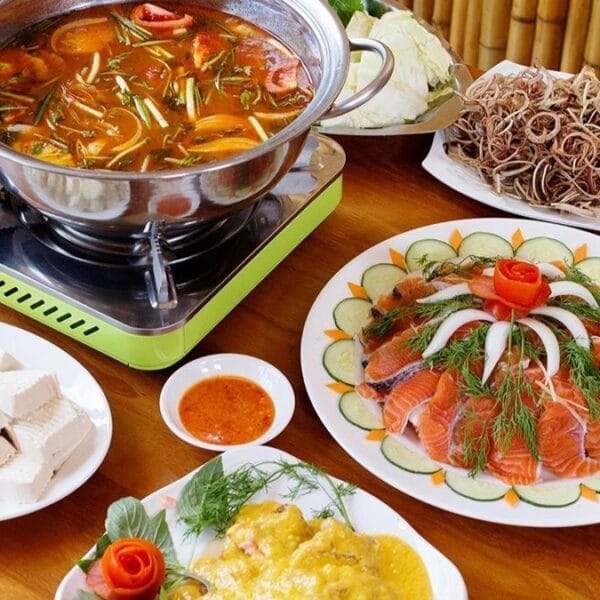
Food in Sapa
Sapa, Vietnam is a fantastic place for foodies to sample the regional cuisine of Northern Vietnam. The following foods are must-try in Sapa:
- Thang Co: Horse flesh, organs, and bones are used to make this Vietnamese stew.
- Salmon hotpot: This dish is often served with noodles, veggies, and a hot sauce for dipping.
- Grilled pork sausage: A local delicacy, this delicious sausage is created with finely chopped pork, garlic, and a variety of spices.
- Black chicken: Served over rice or noodles, the chicken is slow-cooked with Chinese herbs.
- Bitter bamboo shoot soup: To give it a unique flavor, Sapa, Vietnam’s characteristic soup, combines bitter bamboo shoots, pork, and a variety of herbs.
Sapa, a picturesque town nestled in the northern mountains of Vietnam, is renowned for its stunning landscapes, rich cultural heritage, and vibrant ethnic communities. Situated near the Chinese border, Sapa offers breathtaking views of terraced rice fields, lush valleys, and towering peaks. Vietnam Allure Travel invites you to explore this enchanting destination with expertly crafted tours that blend cultural immersion and sightseeing adventures. Discover the unique traditions of the Hmong, Dao, and other ethnic minorities, trek through verdant hills, and marvel at the majestic Fansipan Mountain, the highest peak in Indochina. Whether you’re seeking a tranquil retreat or an exhilarating trek, Sapa promises an unforgettable experience with Vietnam Allure Travel.
Read more: Heaven Gate Sapa: A fascinating spot in Vietnam to go cloud hunting
Recent Posts
Explore Golden Bridge – a unique architectural icon of Vietnam tourism
My Khe Beach nightlife: Where to go and what to do?
Explore My Khe Beach – One of the most beautiful beaches on the planet
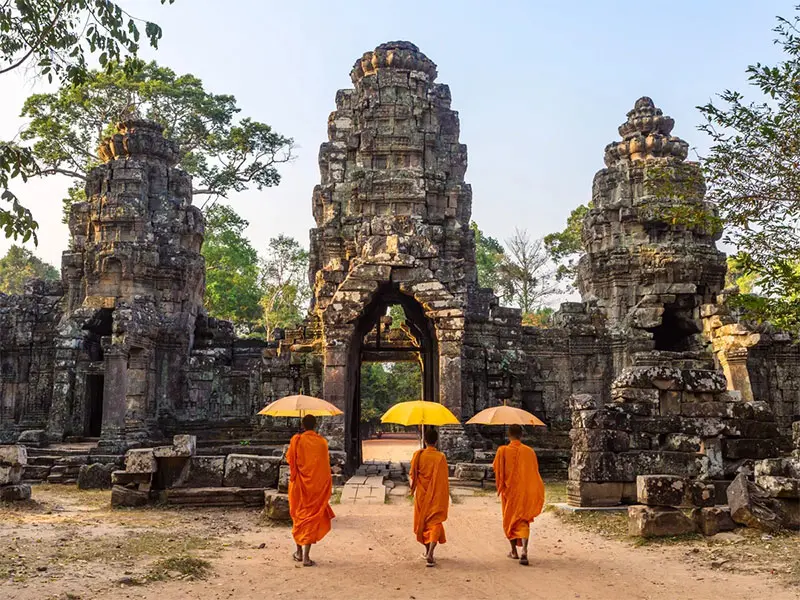
Thailand
